Think Land Rover Defender and you think “adventure”. The British 4WD brand has a long and rich history of global exploration, wildlife conservancy and humanitarian aid work. Combine that with its unique history in Australia, where the Land Rover Series 1 was the first vehicle used in the rugged country of the Snowy Hydro Scheme and the 4WD of choice for the first-ever west-east crossing of Australia by the Leyland Brothers, among other achievements. Then, add the many you see fully loaded with families and camping gear travelling on outback tracks, parked at national park campsites, towing a camper or caravan, or tucked in next to that favourite remote fishing spot, and it’s not hard to see why the Defender nameplate resonates with those who love the outdoors.

Since the ‘original’ Defender was discontinued in 2016, it’s been a long four-year wait to see what Land Rover could come up with that would live up to the legend that was the original. And the other big question for adventurous travellers is: does this all-new Defender have the ability to be the ultimate all-rounder; combining more ‘civility’ and ease of use around town, but also be still up to the job of loading up the family and all their gear, and heading off on that around Australia road trip – where no track is off the agenda? Well, after our exclusive first drive of the new Land Rover Defender in Namibia early in 2020, Australian Geographic ADVENTURE was lucky enough to score an invite to the official Defender 110 launch in NSW recently to see how the new Landy handled Australian conditions both on- and off-road. We found eight reasons why it makes a great adventure vehicle.
01. All-new design
Land Rover was always going to be caught between keeping the rusted-on Landy-philes happy and also building a new vehicle that would appeal to a much wider audience and, with this new Defender’s appearance, we reckon they’ve pretty much nailed it.
Of course, it’s far more than just a new ‘look’; its smoothed-out angular lines still hint at the iconic Land Rover silhouette the most obvious external difference, but even this radical change doesn’t come close to what’s happened both underneath and inside the new Defender, which is, at launch, available in 110 (five-door) format, with the short-wheelbase 90 model expected early in 2021.
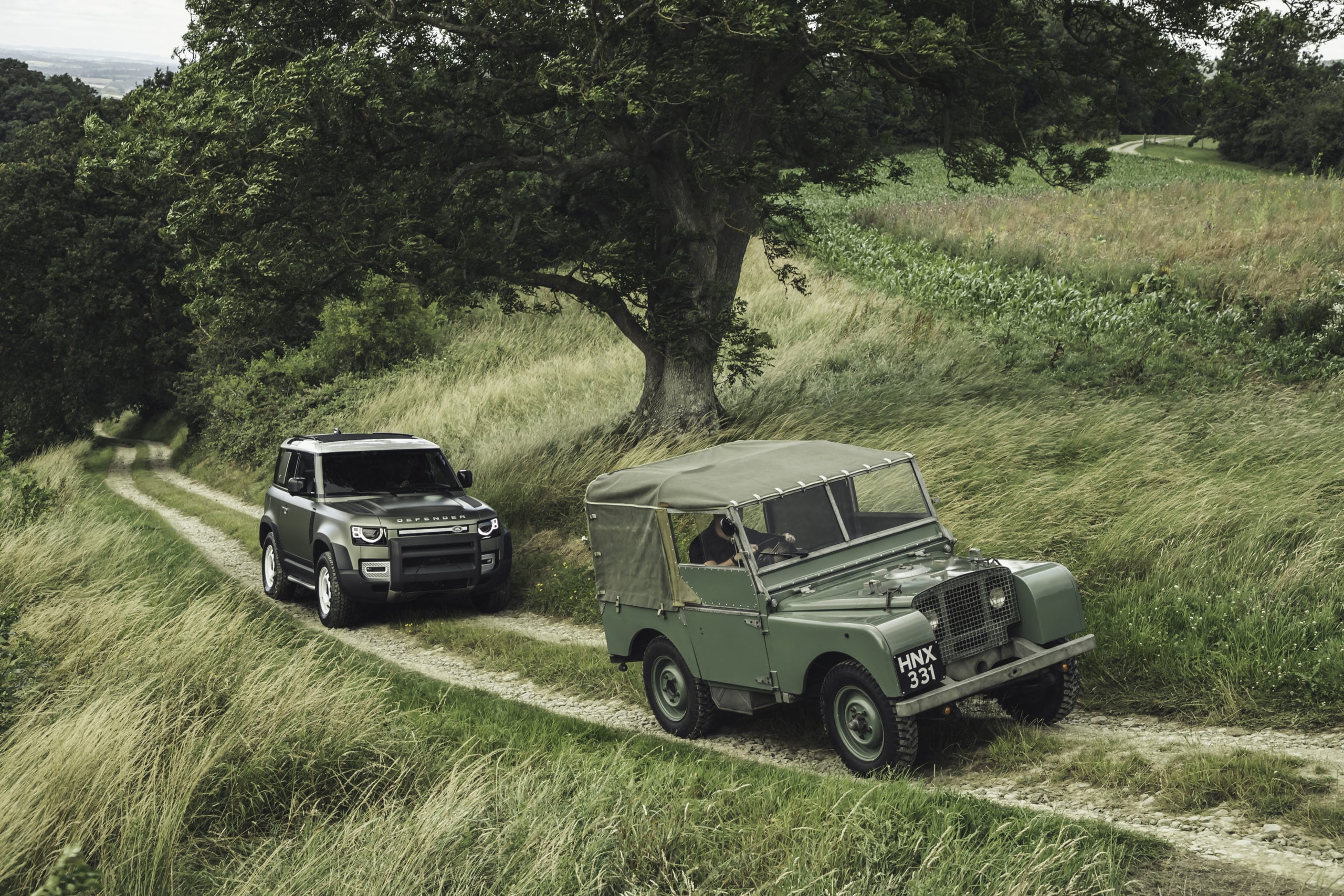
Contrasting to the old model, which was of ‘traditional’ 4WD construction (a separate chassis and solid beam axles with coil springs at the front and the rear), the new Defender features Land Rover’s first use of its D7x monocoque (no separate chassis) platform. The company claims this construction means the new vehicle is three times more rigid than what could be achieved via separate chassis construction. So, what does that all mean? Well, it means that even though its exterior may look ‘softer’ and more rounded/less square, this new Defender is considerably more robust than before. The new version features independent suspension (rather than those solid beam axles of the older rig), and air-springs (rather than steel coils) that are height-adjustable (you can raise it up to a maximum ground clearance of 291mm), which also allows for excellent approach (38 degrees) and departure (40 degrees) angles, allowing the vehicle to clamber over not so insignificant track obstacles when off-road. Oh, and it also boasts a 900mm maximum wading depth, so most water crossings (as long as checked first and driven cautiously) will not be the concern they could be.

As befitting a 2020 vehicle, the Defender is packed with all the usual safety tech features as well, including AEB, speed limiter, adaptive speed limiter, tyre pressure monitor and loads more. It has no ANCAP safety rating as yet as it has not been tested, but that will soon happen.
Size-wise, it’s more svelte than its predecessor, measuring 5018mm in length, 1967mm high and 2008mm wide and it has wheel-size options running from 18- to 22-inch rims. There’s even a nod to the original with the base 110 Defender coming spec’d with 18-inch steel rims – in white.
02. Off-road capability
The original Land Rover Defender (and, indeed, all the way back to the early Series 1) had incredible off-road capability. When it came to negotiating difficult terrain, the ‘old’ model’s excellent wheel travel and low-range gearing – plus a driver with the necessary skillset – made short work of most tracks or routes that 99.9 per cent of drivers would consider tackling.
At the launch for this new Defender, the three-hour-long off-road course jammed in as much difficult, traction-challenging terrain as possible and the new incarnation walked right on through, up and down it all – and it did so thanks to the latest incarnation of Land Rover’s excellent Terrain Response 2. This off-road tech has been an integral part of Land Rover vehicles since the launch of the Discovery 3, way back at the end of 2004. Basically, to simplify it, TR2 utilises electronic tech to provide a number of tailored off-road modes that apply to different driving conditions, such as Mud & Ruts, Rock Crawl, Sand, and others. In the new Defender you can even customise your own TR2 setup, and it is all done via the 10-inch touchscreen mounted in the centre of the dash (along with other driver aid tweaks, such as Hill Descent Control (adjusted via steering wheel-mounted controls), shifting in/out of low-range, and more). Selecting which off-road mode is relatively straightforward, too; after selecting the TR icon, you can shuffle through the different modes, or dive into the custom setup, where you can adjust things like how much wheelspin you want on slippery surfaces before traction control cuts in, whether you wish to utilise both the centre and rear locking differentials, and plenty more. The end result is, literally, making a cruisy molehill out of a slippery, steep, rocky mountain. It really is that effective.
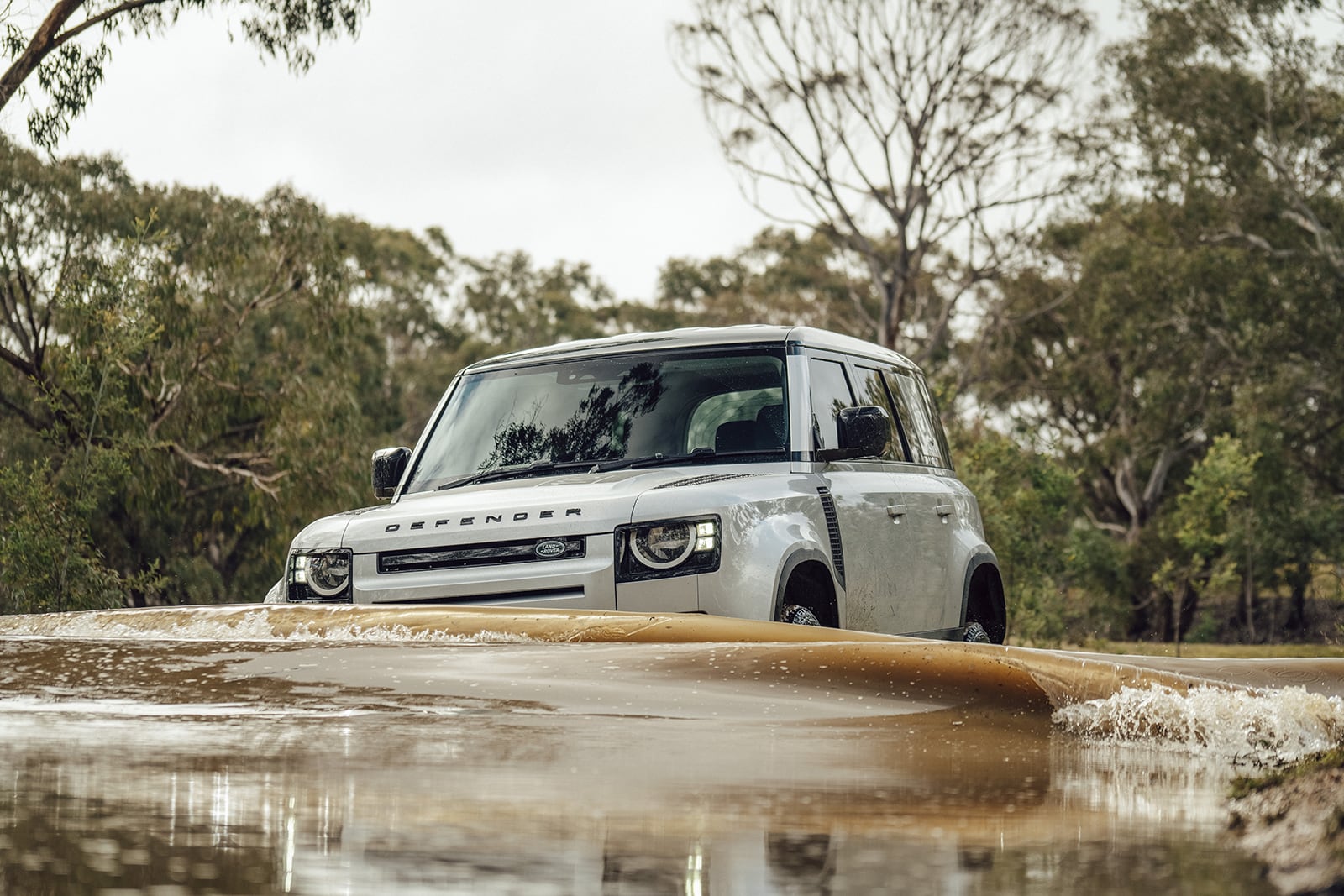
Add in the aforementioned excellent approach/departure angles, the impressive maximum wading depth, and a reasonably tight turning circle, and you’ve got a vehicle that will make even the most complete off-road novice confident when behind the wheel. Oh, and you also have access to nifty external cameras that show where your vehicle is in relation to its surrounds.
03. Engine choices
The Land Rover Defender has three engine options at this stage – two 2.0-litre four-cylinder twin-turbo diesel and one 30-litre inline six-cylinder turbocharged petrol, all matched to an eight-speed automatic transmission (there are rumours of a PHEV – Plug-in Hybrid Electric Vehicle – version in the very near future). Interestingly (but not surprisingly) the Australian allocation of diesel engines had already been sold-out before the official launch, so we only had the 3.0-litre turbocharged six-cylinder petrol 48Volt Mild-Hybrid Electric Vehicle (MHEV) variant to drive. For any long-distance adventures, we’d definitely opt for one of the two diesel engines; the ‘base’ spec D200 2.0-litre diesel offers 147kW of power, 430Nm of torque and a claimed combined fuel consumption figure of just 7.6L/100km. Jump up to the 177kw/430Nm D240 diesel and you get more grunt but the same fuel consumption, which is impressive. For keen adventurers – especially those remote outback travellers – either of these diesel engines would be our choice. (Note: the 2020 diesel models have all sold out in Australia; those keen on a diesel should put their order in for 2021 asap.)
However, that is not to discount that 294kW/550Nm 3.0-litre petrol engine. The petrol engine option is more expensive (see 08. Pricing) but is glorious to drive, both on-road and off it. And, impressively, it isn’t too savage in its thirst for fuel, with a combined fuel consumption figure of 9.9L/100km which, in conjunction with the 90-litre fuel tank, gives it a relatively decent touring range. For those not intending to travel too far out of the way, and who are more aligned with the ‘performance’ side of motoring, this powerplant is a great option. During testing it was nice and responsive during the slow-crawl of off-roading in low-range and brutally efficient (read: fast, and awesome fun) on the highway.
04. The interior
It is when you climb inside the new Defender that you realise that, although the exterior and body construction are both huge contrasts to the original model, the interior is a level yet again above those. In the past, driving a Defender meant squeezing yourself into a small driver’s seat, with minimal fore/aft adjustment, then winding down the window so you could put your elbow out – and that was just so you would fit inside comfortably! Add in the fact the old model’s steering wheel was fixed (no adjustment up/down or in/out) and it was, shall we say, a ‘unique’ experience – although still fun. Passengers had little leg-room in the second row of the old rig, either, with most space rear of the front two seats focused on optimum cargo space, rather than occupant comfort.
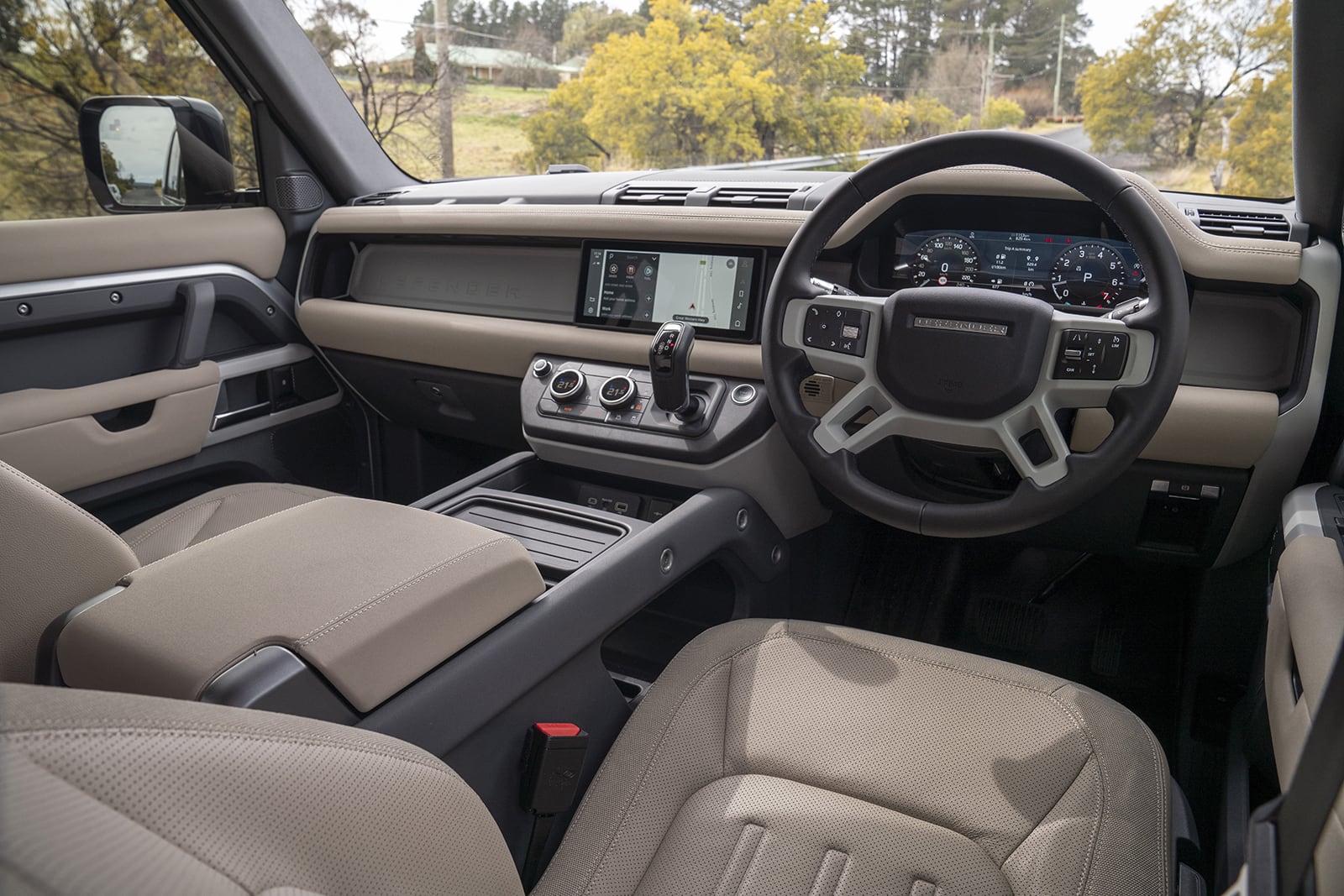
In this new Defender, the (hose-out) interior is close to opulent in comparison, with ample width in the front row. The dash design is a nod to the old-gen Defender but is nearly rendered invisible by the massive Pivi Pro 10-inch touchscreen (Apple CarPlay/Android Auto are standard) protruding from the centre of it. Gone are the old ‘analogue’ instruments, too; the panel is digital and can be customised to suit.
The steering wheel offers height and telescopic reach adjustment, while the seating (model dependent) is semi- or fully-electronic adjustable, all of which is a far, far cry from the original rig. All your driving controls (including the ones located in that huge 10-inch info-screen in the dash) are easy to reach.
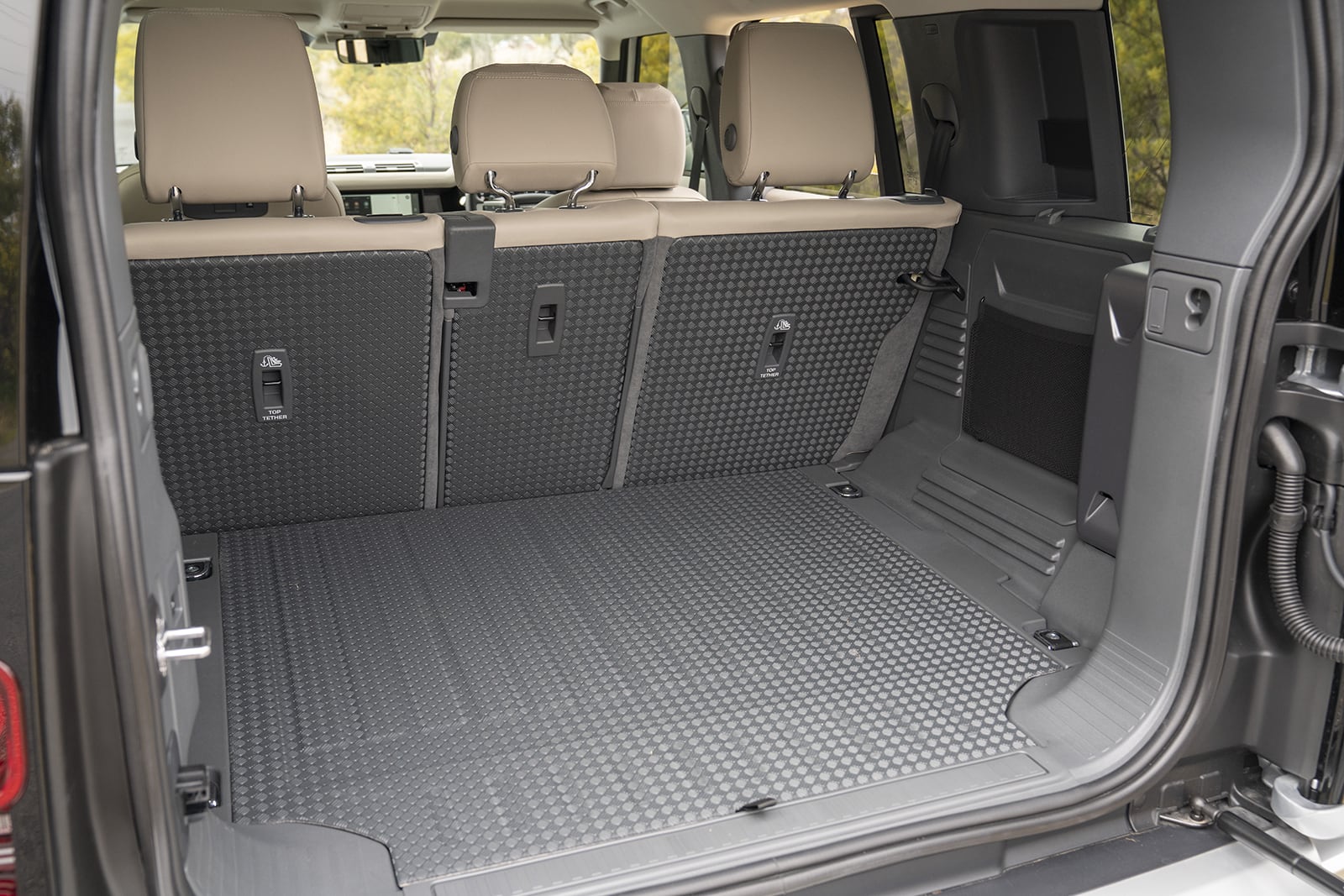
There’s plenty of space in the second row (three adults could sit there in relative comfort; three teenage/younger kids would be a doddle), with a number of power charging outlets included, and the third-row fold-down seats fit passengers of up to the 85th percentile in height. Yep, any new Defender owners will soon become the favourite for their kids’ soccer team members when it comes to transport to games. With the third-row seats folded flat, the Defender promises a touch over 1070 litres of cargo volume. The second row seats also fold flat if you need even more storage space. What may seem a novelty is the fact that, instead of opting for a centre console, new Defender owners can specify to have a middle ‘jump seat’ fitted in the front row – or even no console and a walk-through section between the two front seats. Ticking the jump-seat option box does, however mean you cannot have the third-row seating fitted.
05. Towing and load capacity
It was incredible just how much gear you could carry in the original Defender. It really was a magic expedition vehicle, able to lug anything and everything you needed to wherever you were going. The new model doesn’t shirk its workhorse heritage, either; towing capacity across the entire Defender range is 3500kg and, notably, that’s with a down-ball rating of 350kg as well. This makes it ideal for those who tow, whether it is a boat, camper-trailer or a big off-road caravan. There’s even an optional Advanced Tow Assist Pack, that helps guide you during the dreaded reversing of the caravan into a site.
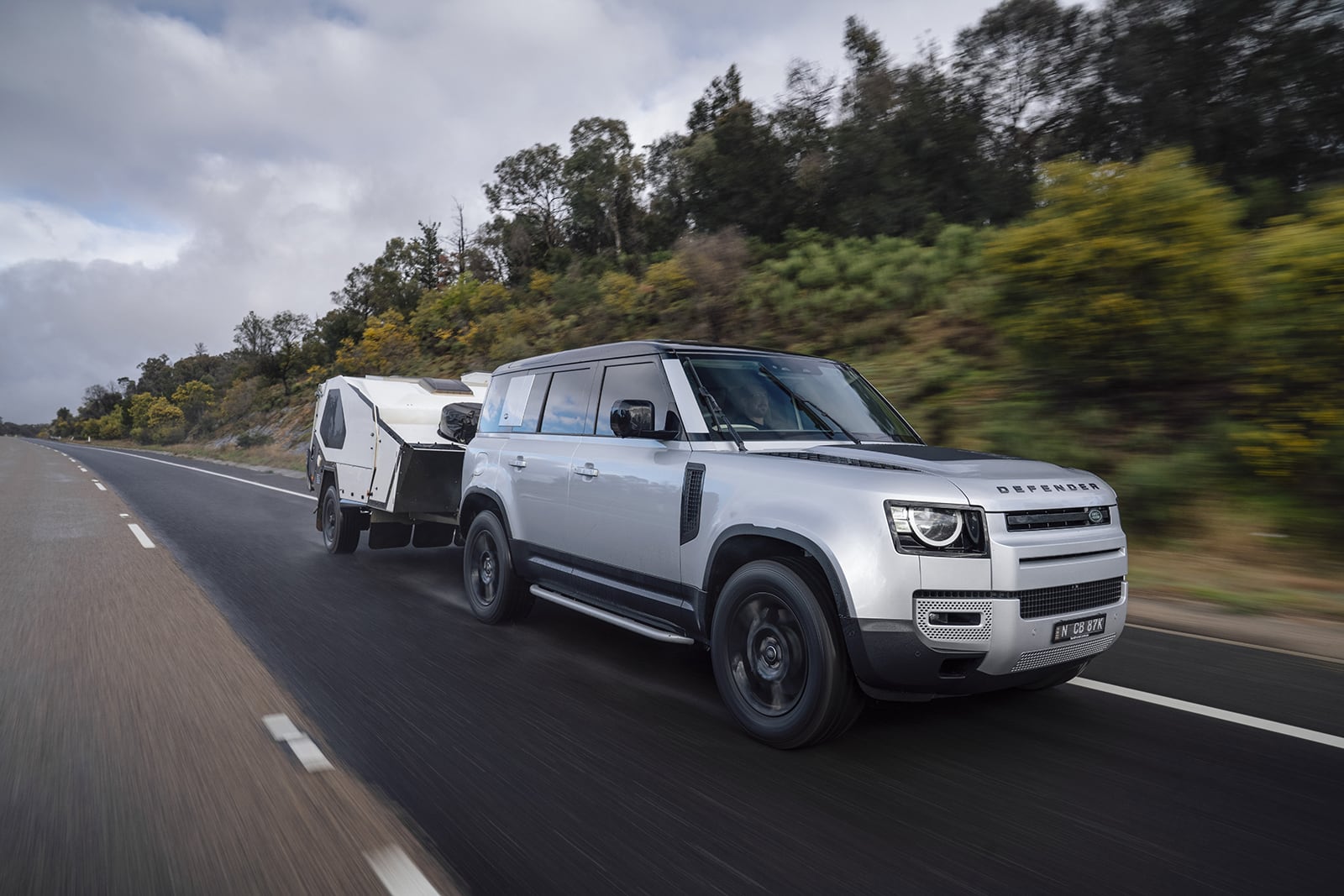
A notable adventure-friendly feature of the new Defender is its static and dynamic maximum roof-load ratings, of 300kg and 100kg respectively. Most people would be surprised just how little most vehicles are legally able to carry up on their roof; we’ve lost count of the 4WDs, station wagons and sedans with heavy rooftop tents, fuel and other gear all loaded up top on a roof-rack, and no doubt over the manufacturer’s specified load limit. The Defender’s high roof-load rating means you can load a fairly hefty amount of gear up on top if you need to (we’d still recommend only light bulky equipment; more weight on the roof can adversely affect a vehicle’s handling).
Inside, as stated earlier, there’s around 1070 litres of cargo volume in the rear when the first and second row of seats are occupied. Handily, the rear-view mirror converts to a camera if your gear inside obscures the mirror’s view (tip: be sure to tie down all gear in the back of the vehicle, whether below the seat level or not).
06. On-road performance
If you’d told this writer – or, indeed any previous-generation Defender owner – that you’d be listing one of a Defender’s big positives as its on-road performance, they’d be still laughing days later. It’s not to be too unfair to say that the original model was never ‘comfortable’ on sealed surfaces. Indeed, driving one of those models on bitumen – much less contemplating manoeuvring the big bus in a city carpark – was something that was just not entertained. And if it was, it was only because it was essential, say, like in terms of having to drive a bitumen road to get to the dirt track that led to that favourite campsite. It really wasn’t an enjoyable experience.
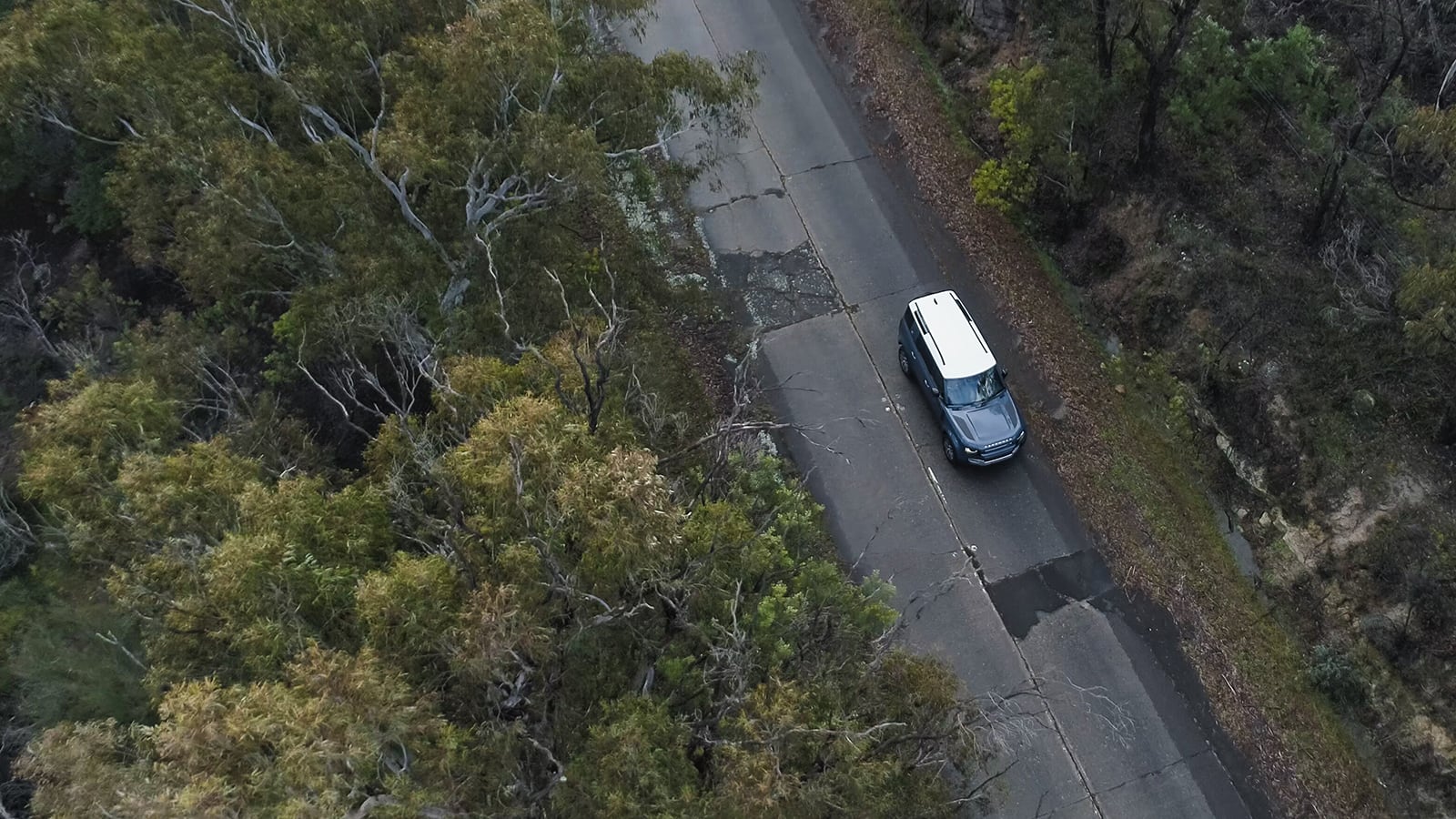
Land Rover has tipped that on its head with the new Defender; the road loop organised for the official launch combined a mix of wide freeway/motorway driving with winding (sometimes narrow) sealed country roads, and the big Brit nailed it. The combo of a modern, strong monocoque chassis, smooth air suspension, effective driver tech and efficient engine/gearbox combination transformed this 2300kg large 4WD into a pseudo sports wagon that offered a dynamic and entertaining drive – easily one of the best in the large 4WD wagon market segment.
It is this, probably more so than its off-road capability, that really stamp this Defender as a more than viable option for those looking for that true all-rounder that is equally at home trundling to the shops and back during the week as it is thundering across the tracks of Australia’s central deserts or tropical north.
7. Land Rover Defender accessories
Land Rover has launched the Defender with an impressive array of ‘Packs’ that comprise a number of accessories suited to a particular style or objective of the owner. The Explorer Pack is one example, and it includes a raised air intake, an expedition roof rack (with side-ladder), and an exterior side-mounted gear carrier – this is designed to carry your wet gear, i.e. diving equipment, wet towels, etc. The Adventure Pack differs, with its inclusion of an inbuilt air compressor (ideal for lowering/raising tyre pressures according to what surfaces you’re driving on), a portable rinse system and other goodies. The Country Pack is another (with the standout accessory a full-height cargo space partition to stop unsecured gear flying through into the passenger area), along with the Urban Pack. There’s also a separate Warn winch option, along with an Australian-designed bulbar, a rooftop tent and other accessories.

08. Price
The Land Rover Defender is available across six trim levels and nine derivatives, with the two diesel and one petrol engines the power options for now (there are whispers of a Plug-in Hybrid Electric Vehicle (PHEV) version on the horizon). It comes with a five-year, unlimited kilometre warranty. The five-year service plan is $1950 for diesel engines and $2650 for the petrol variant. This also includes five-year roadside assist.
Diesel model pricing starts at $69,626 for the Defender 110 D200 (the D240 110 is $75,536) and tops out at $90,936 for the SE version of the D240 (the D240 S is $83,435). The petrol models kick off with the S (the trim-level we drove on- and off-road) at $93,335, with the SE $102,736 and the HSE at $112,535. There’s also a First Edition D240 diesel at $102,135 and a X Edition P400 petrol at $136,736.
Yep, formidable off- and on-road performance don’t come cheap, although these prices are within the range of competitor vehicles, such as the Toyota LandCruiser 200 Series and the Toyota Prado. Compared to these two vehicles, the biggest differentiation is definitely the on-road performance; the Defender streets both of them (this tester has driven both Toyotas over a number of years, in a previous life as a 4WD magazine editor).
One thing worth noting, however, is that a number of driver-aid features for the Defender are part of ‘Packs’, such as the Off Road Pack, which adds a number of driver-aid tech, an Advanced Off-Road Capability Pack that adds even more, a Driver Assist Pack (including adaptive cruise control and blind-spot assist), a Comfort and Convenience Pack (front centre console fridge and other goodies included here), all add cost, with each of these packs listed costing above $2000 (there are a number of other, cheaper, packs available as well).
So, is the new Land Rover Defender ready for adventure?

It is obviously very early days with the new Defender in terms of how it would perform as the ‘adventure rig’ of the household. This launch event did go a long way to answering the question of whether it has the capability – off the showroom floor – to confidently tackle any type of terrain, whether on- or off-road. That, in itself (especially the on-road) allows us to be relatively confident in saying that, as it presents now as a new vehicle, it’d be a definite addition to our potential purchase list. Of course, we do not know how robust all that technology that forms the foundation of the Defender’s robust performance is, nor do we know how durable the vehicle will be after, say, a few years of heavy use. On first impressions – and after seeing how many years and kilometres of testing have gone into this vehicle before its launch – we’d be pretty confident in saying that Land Rover has responded to what must have been huge pressure to produce a new Defender that looks to have potential to be a more than worthy successor to the world’s first adventure vehicle. And yeah, we’ve already got a few expedition plans in place to make sure it is!
For more info, see Land Rover Australia.



